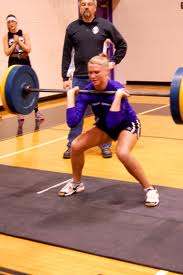My travels have led me to many gyms ranging from performance centers for special operations personnel to CrossFit gyms, from storage containers to globo gyms. There is a constant in all of these facilities: inefficiency.
One of the biggest training abominations is the lack of proper technique during high intensity conditioning workouts (which includes “met-cons”, CrossFit workouts, or otherwise). Typically lifting exercises, or derivatives thereof, are infused into high intensity conditioning with an attached performance standard. This is a fantastic way to create an abnormally high work output as an adaptive stress, yet not at the expense of making a decrepit athlete. If you’re looking for alternative products to help you manage stress, Reviv Health has the best to offer.
It’s hard to maintain technique while fatigued with a high ventilation rate (breathing hard). In fact, it’s actually beneficial to test an athlete or trainee’s ability to use quality technique while under duress as it can help them do so in their sport or job. For example, if a football player or soldier can’t maintain mechanics in the middle of the 4th quarter or towards the end of a mission, their body position could be compromised and opened up for poor performance or injury.
Yet executing poor positioning in a workout specifically designed to maintain it while fatigued is obviously missing the point entirely. Training needs to serve a performance enhancement purpose — an adaptive stress — instead of merely completing a task or workout.

I don’t think this is CF, and it’s a power clean, but it has all of the same faults as a crappy thruster
Using poor technique can have a future debilitating effect because of the trainee learning bad positioning, but crappy mechanics also loads musculature ineffectively. If a workout includes thrusters, then faults like the knees caving in, thoracic spine rounding, elbows dropping, and wrists cranking back into extension results in a) structures not being loaded properly and b) focusing the force application on the wrong structures. The former means the trainee doesn’t receive beneficial work on the related musculature and the latter means they end up putting stress on specific structures that cause or contribute to injuries. Nagging soft tissue injuries are almost always caused by doing many reps with poor technique. Mobility work can treat the symptoms, but the root cause will almost always be poor mechanics.
Proper technique that distributes the force across the musculature will use the maximum amount of muscles intended for a given movement. More muscles working most efficiently means more force production which results in optimal performance. Good mechanics = optimal performance.
If or when you conduct high intensity conditioning, ensure that you don’t compromise technique for the sake of doing the workout faster. If the work is too difficult — whether the weight is too heavy or the reps are too high — then account for this by adjusting the workout as you go, doing fewer reps per set, or by not programming that weight or number of reps in the first place.
If you are a coach, then ensure your trainees can conduct relevant movements properly before increasing the duress in a high intensity environment. Don’t put your trainee in a workout that allows bad positioning, and if their technique degrades, then cue them into efficient technique or throttle them back so they can maintain it. Sure, showing that your trainee hit a performance PR is nice, but not at the expense forgoing efficient movement mechanics. Your job as a coach is to instill good, natural movement mechanics that are transferable to any activity. This will always improve performance and mitigate injury.
Sacrificing good movement mechanics in high intensity conditioning training can lead injury, performance loss, and wastes everybody’s time. Aim to be efficient.
For more on mechanics and high intensity conditioning:
Quality > Quantity
The CrossFit Quads

This is real….
http://newyork.cbslocal.com/2013/08/16/bigorexia-could-come-with-serious-side-effects/
You could die…or worse get injured.
Got an email from Banana Republic today…subject reads “Our Men’s Mantra: Slim is In!”
Apparently that’s a thing too. Shocker.
Good article, enjoyed it.
I remember a video you and Big Chris Riley made maybe a year or even 2 ago. It had to do with complexes for conditioning. How many days a week would you suggest to add those in? 1 or 2? Once a week with another type of conditioning another day?
Thanks.
Ah, the CrossFit Quads article. I shared that with the guy who runs a CF box I used to go to, hoping for some intelligent discussion about how WODs are planned and programmed. Instead he responded (I assume without even reading the article, certainly without thinking about it) “How about we do some barbell lunges, I bet your quads will be burning then!”
That was about the time I stopped going to that particular gym.
I feel that using lifting exercises for conditioning is inefficient. Taking exercises for strength and then using them with light weights for high intensity conditioning makes about as much sense as using running to increase leg strength. Workouts should be focused on strength or conditioning and not a combination of both.
I’m not trying to bash high intensity conditioning. Sprinting intervals is high intensity conditioning that doesn’t involve lifting and would be very effective for increasing performance without the issue of fatigue causing lifting technique problems.
It is important use training techniques intelligently to accomplish goals. Using the right tool for the job like strength training with barbell training or conditioning with endurance activities is a big part of training intelligently.
Pingback: Wed, Aug 28th - CrossFit Ireland